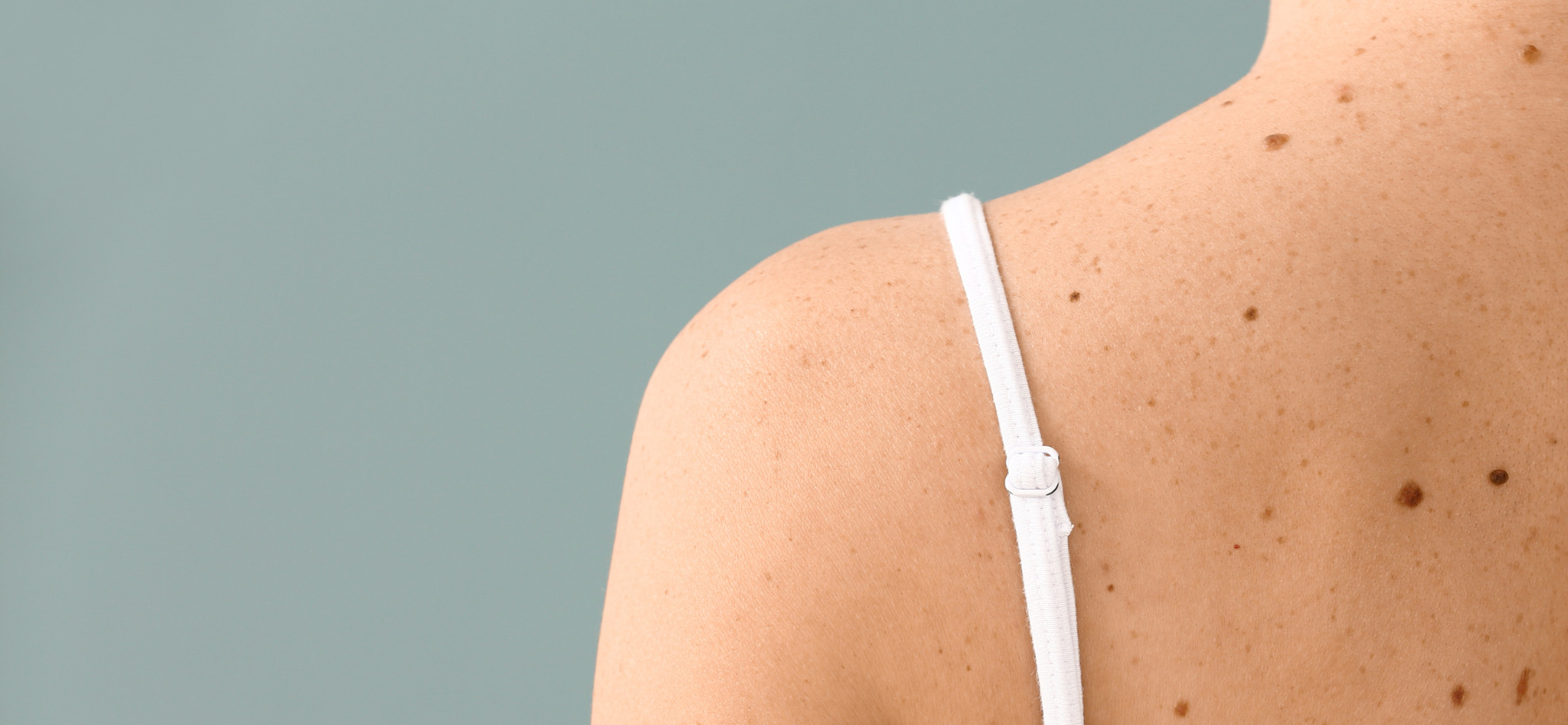The Lisbon sunshine makes you want to sit on a bench with a good book.
Or sit on a terrace and taste pasteis de bacalhau.
Or dip your feet in the Jardim de Torel.
Yes, but what about your skin during all this? Is it okay??
Ola!
This is Dr Joy.
Today I’m talking about your beautiful skin and the tests you can do if there are any abnormalities.
Vamos!
The skin: its composition and role
The skin is the largest organ in the human body. Its composition is vast and it has three layers:
- Epidermis
- Dermis
- Fat layer (also called hypodermis)
Each of these layers has specific roles. The skin as a whole has many important functions, including:
- Maintaining water and electrolyte balance
- Protection of the body against trauma
- Detection of painful and pleasurable stimuli
- Participation in the synthesis of vitamin D
- Regulation of body temperature
- etc.
The skin also keeps vital chemicals and nutrients in the body. It also prevents dangerous substances from entering the body by acting as a shield. This is also its role against the dangerous effects of ultraviolet rays emitted by the sun.
The colour, texture and folds of the skin help to define the characteristics of each person.
When should you have a skin examination?
Everyone should have their skin checked regularly.
This can be done by a dermatologist or sometimes by your GP as part of your annual health check-up.
However, there are genetic predisposing factors and environmental factors which mean that examinations should be more frequent.
This is the case, for example, for people with fair skin. Indeed, it has been proven that they are more at risk of developing skin cancers (carcinomas and melanomas). Their “sun capital”, defined at birth, is depleted more quickly.
Other factors may increase the frequency of dermatological examinations:
- Personal history of skin cancer
- A family history of melanoma
- Many moles or freckles
- Sunburn in childhood
- Certain therapies administered, such as immunosuppressants and phototherapy.
Also, if you notice the sudden appearance of a mole, an atypical spot or a change in colour, do not hesitate to consult a dermatologist.
Why should you have your skin examined?
Having your skin examined regularly allows you to take care of possible problems at an early stage.
It also helps to prevent skin cancer. A dermatological examination can determine the degree of sensitivity to UV radiation (which is genetically transmitted) and thus the risk of developing skin cancer.
Skin cancers are the most frequent cancers in humans. Its overall mortality remains low thanks to the early diagnosis of the majority of them. They affect all age groups, with a peak between the ages of 30 and 50.
But the examination of the skin also allows us to analyse its ageing. This dimension is mostly aesthetic. After having diagnosed the alterations of your skin, differentiating those due to time from those due to the sun, the dermatologist can propose a treatment.
This will be specifically adapted to your age, to the area to be treated (neck, face, hands…), to the depth of wrinkles and furrows and to the existence of spots or rosacea.
To sum up, the dermatological examination makes it possible to target people at risk of developing skin cancers and to detect suspicious lesions (sometimes with the help of a dermoscope when the eye is not enough) in order to remove them.
The skin examination
First, the dermatologist will start with a clinical examination, i.e. with the naked eye, of the entire skin. This is a quick and painless examination that provides a lot of information about your health.
It can also be used to determine the stage of solar ageing and to make an early diagnosis of skin cancers (carcinomas, melanomas).
But the dermatologist can also carry out other examinations, such as:
- Dermatoscopy: thanks to a dermatoscope that allows the image to be magnified more than 10 times to see through certain layers of the skin, as well as the use of a polarised light or the application of oil. These images can be recorded for comparison on future visits.
- Biopsy: This is the removal of a small piece of skin for examination under a microscope. It is a simple procedure that requires a local anaesthetic and, using a small blade, scissors, razor blade or a round punch, a piece of skin is removed. This is sent to a laboratory for analysis.
Other examinations exist and it is the dermatologist who will choose the one most suitable for your case.
At Alegria Medical Centre, we are able to perform:
- Manual dermoscopy
- Excisions
- Biopsies
- Electrosurgery
- Curettage
- Intralesional infiltration
- Peeling
For more information, please contact us.
The case of moles
For moles, you can monitor them throughout the year using the ABCDE criteria. If they meet these criteria, then they are suspect:
- A for Asymmetry
- B for irregular edges (Borders)
- C as non-homogeneous Colour
- D is for Diameter greater than 6 mm
- E is for Evolution: any spot that changes appearance rapidly (shape, size, thickness, colour) or that bleeds is a warning sign.
In this case, make an appointment with your dermatologist.
To conclude this article, I’d like to share some tips with you:
- Avoid the sun between 11am and 4pm
- Do not expose children under one year old
- Expose yourself gradually without sunburn
- Protect children (and adults) with a hat, T-shirt and sunglasses.
- Use sun cream
Take care of yourself.
See you soon,
Dr Joy!
Sources:
This information is not a substitute for medical advice.
You must seek the advice of your doctor or another qualified health professional with any questions you may have regarding your health condition.



